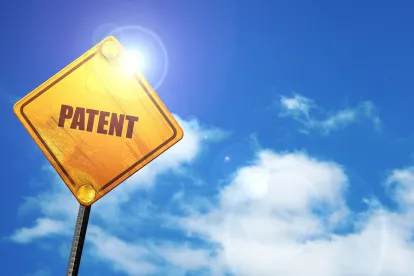In a non-precedential opinion, the Federal Circuit held as patent-ineligible patent claims to personalized therapy to treat patients who would benefit from inhaled nitric oxide treatment and withhold treatment from patients who might be harmed. INO Therapeutics LLC v. Praxair Distribution Inc. (Fed. Cir. 2018-1019, Aug. 27, 2019). In dissenting and finding the claims eligible, Judge Newman cautioned against the majority’s interpretation of the Federal Circuit’s own precedent on patent eligibility and its downstream negative impact on medical innovation. The decision, while non-precedential, is still an important tutorial on patent-eligibility of claims that combine diagnostic and treatment steps routinely used in personalized medicine.
Treating With Inhaled Nitric Oxide
Claim 1 of U.S. Patent No. 8,795,7411 (the ‘741 Patent) was representative of the medical treatment claims under review. It recited:
Claim 1 recites:
1. A method of treating patients who are candidates for inhaled nitric oxide treatment, which method reduces the risk that inhalation of nitric oxide gas will induce an increase in pulmonary capillary wedge pressure (PCWP) leading to pulmonary edema in neonatal patients with hypoxic respiratory failure, the method comprising:
(a) identifying a plurality of term or near-term neonatal patients who have hypoxic respiratory failure and are candidates for 20 ppm inhaled nitric oxidetreatment;
(b) determining that a first patient of the plurality does not have left ventricular dysfunction;
(c) determining that a second patient of the plurality has left ventricular dysfunction, so is at particular risk of increased PCWP leading to pulmonary edema upon treatment with inhaled nitricoxide;
(d) administering 20 ppm inhaled nitric oxide treatment to the first patient; and
(e) excluding the second patient from treatment with inhaled nitric oxide, based on the determination that the second patient has left ventricular dysfunction, so is at particular risk of increased PCWP leading to pulmonary edema upon treatment with inhaled nitric oxide.
‘741 patent col. 14 ll. 28–49 (emphases added).
Step One – The Claim Describes a Natural Phenomenon
Chief Judge Prost wrote the opinion for the majority, with Judge Dyk joining. Judge Newman dissented from the panel on the issue of patent-eligibility.
Chief Judge Prost began her analysis by citing the two-part eligibility test elaborated by the Federal Circuit in Athena Diagnostics, Inc. v. Mayo Collaborative Servs. LLC, 915 F.3d 743, 749 (Fed. Cir. 2019). Under the test, the claim is first analyzed to determine if it is directed to a patent-ineligible concept, such as a natural phenomenon. If it is, then the claim is evaluated to determine if the limitations of the claim transform it into a patent-eligible application of the ineligible concept.
The Federal Circuit determined that the claim was directed to an ineligible concept because it was directed to the observation regarding how a neonate patient will react to inhaled nitric oxide. The court stated:
“The natural phenomenon here is undisputed. A neonate patient’s body will react to iNO gas [inhaled nitric oxide] in a certain way depending on whether or not the patient has a congenital heart condition called LVD. Namely, if the patient has LVD, iNO gas can induce a life-threatening event known as pulmonary edema. As the district court found, Praxair’s expert, Dr. Lawson, credibly testified that “the ‘standard observation’ that a dysfunctional ventricle, in combination with increased blood flow, could cause a backup of venous blood, and, in turn, edema,” is a phenomenon “taught to first year medical students.” … In short, while nitric oxide lessens constriction, increases blood flow, and can help normal patients with hypoxic respiratory failure, it will harm a patient suffering from LVD and may even result in death.”
Slip Op. at 9, internal citations omitted.
The court also focused on the “exclusion step” of the claim, noting that it merely restates natural law. In doing so, it rejected Appellant’s argument that because no one had screened for this adverse event before, the claim was eligible. In the court’s opinion, “this ‘new’ instruction that directs the physician not to act was exactly why the claim is directed to an ineligible concept - because it merely instructed the physician not to act. Slip Op. at 10.
The treatment step also did not rescue the claim from ineligibility. The court opined that the focus of the claim was not a new method or a means to reduce the risk of an adverse event, such as pulmonary edema. While the court acknowledged that the method required a treatment step, it determined that treatment was not the focus of the claimed invention (the court focusing on the “do not treat” element), so the claim as a whole was directed to a natural phenomenon. Slip Op. at 11.
The majority distinguished the court’s precedential Vanda Pharm. Inc. v. West-Ward Pharm. Int’l Ltd., 887 F.3d 1117 (Fed. Cir. 2018). Unlike Vanda, the invention did not improve treatment of the underlying conditions in the patients. Slip Op. at 12-13. “Unlike Vanda, claim 1 does not recite a specific method of treating the disease using an improved set of specific doses in light of this discovery. Instead, the broad directive to exclude all neonatal patients with LVD from iNO treatment (while continuing to treat other patients according to the established dose), collapses into a claim focused on the natural phenomenon.” Slip Op. at 13.
The court also distinguished Nat. Alternatives Int’l, Inc. v. Creative Compounds, LLC, 918F.3d1338 (Fed.Cir.2019), a decision that held a treatment claim was patent-eligibile. The court stated that in their earlier Natural Alternatives decision, the invention was used as a natural law to produce a change in the natural state of the patient by treatment. Here, the court did not find such a change in the state of the patient.
In sum, the majority did not see that the claim recited an improvement in treating patients or an application of the natural law. As a result, the claim was directed to a natural phenomenon.
Step Two – Routine and Conventional Steps
The court also determined that the elements of the claim as a whole do not recite an “inventive concept” that transforms the claim because the limitations in addition to the exclusionary step amount to nothing more than routine and conventional steps and a general instruction to apply the natural phenomenon. Slip Op. at 17. In the court’s opinion, the claim “boiled down to an instruction to doctors: when treating neonatal patients with iNO gas, take into account their natural reaction to iNO gas. Do not give iNO gas to patients with LVD; otherwise, proceed with treatment. Any other steps are either necessary to manifest the natural law or are undisputedly routine and conventional.” Slip Op. at 19-20.
Judge Newman’s Dissent – Claims are Patent-Eligible
Judge Newman dissented, noting at the outset that the claims for a method of medical treatment are a class of subject matter whose eligibility under section 101 is established by precedent. She found that contrary to the majority’s opinion, the method does not exist in nature because it was designed by and administered by humans. Judge Newman further stated that the majority’s analysis also failed because the claim steps were improperly separated into old and new steps rather than considering the elements as a whole. Moreover, in Judge Newman’s opinion, the analysis also failed by interjecting issues of sections 102 and 103 into the section 101 analysis.
In concluding her dissent, Judge Newman recognized the economic incentives that patents provide in the medical arts, stating that:
“Patents provide the economic incentive for medical scientists and industries to devise new treatments to serve the afflicted public. My colleagues’ holding that such inventions are broadly ineligible for patenting, will simply add disincentive to medical advance. From my colleagues’ holding that this improved method of treatment of neonates having left ventricular dysfunction is ineligible under section 101, I respectfully dissent.”
Is a Personalized Therapy Patent-Eligible?
Personalized medicine utilizes diagnostic technology to identify the best treatment for patients often with minimal side effects. Here, the claim identified a subset of patients that should not receive inhaled nitric oxide due to the diagnosis of left ventricular dysfunction, thereby avoiding pulmonary edema upon treatment. While the majority did not recognize this as an “invention” the patients who avoid an adverse event surely appreciated its value. I would agree with Judge Newman, and hope that the courts would support innovation by providing the appropriate economic incentives to further medical discovery in this emerging field which rely on diagnostic technology.
For patent drafters, this decision is frustrating in that it disregarded an explicit claim limitation and analyzed eligibility on whether the remaining elements of the claim satisfied sections 102 and 103. Frustration aside, patent drafters should consider if their personalized medicine and treatment claims would survive a section 101 challenge if similarly analyzed.
1 The case was on appeal from the United States District Court for the District of Delaware wherein several patents sharing a common specification were held ineligible. After a bench trial, the District Court held all claims of the treatment claims ineligible. Only this issue is discussed in this post.




 />i
/>i
